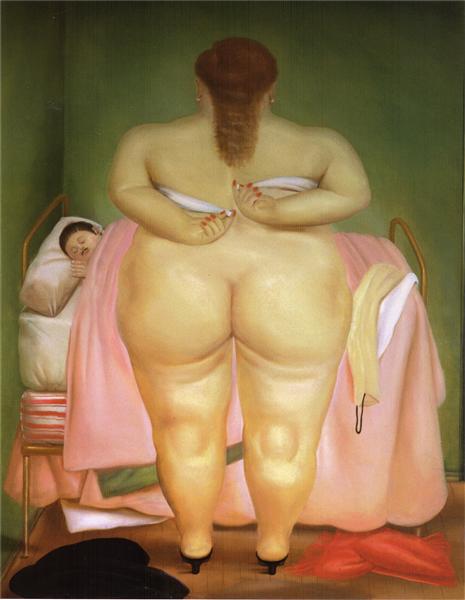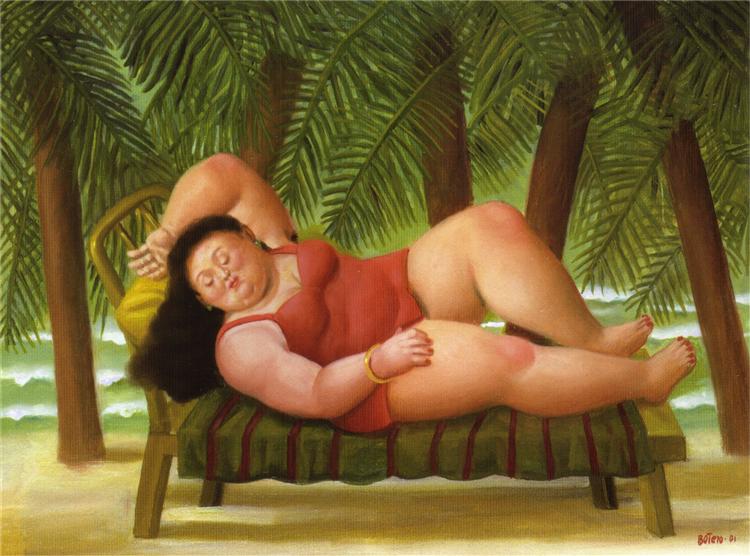Renowned Colombian artist Fernando Botero is well-known for his unusual figurative painting technique, defined by oversized forms and proportions. Born in Medellín, Colombia, on April 19, 1932, Botero became famous worldwide for his drawings, paintings, and sculptures. A style known as “Boterismo,” which emphasises volume and form, is frequently used in Botero’s artwork to show topics including dancers, musicians, animals, and regular people. Since he usually includes social and political commentary, his art is generally whimsical, humorous, and satirical.
Botero has supported cultural activities and the arts domestically and internationally in addition to his creative efforts. Collectors widely seek after his paintings, and his sculptures can be found in public areas and museums worldwide. One of the most well-known Latin American artists of the 20th and 21st centuries, Botero has had a profound influence on the art world that goes well beyond the borders of his own Colombia.
Art of Fernando Botero
Fernando Botero is a prominent artist in modern art, best known for his unique “Boterismo” style, defined by exaggerated volumes and proportions. It’s easy to recognise Botero’s style. By exaggerating their proportions, he exaggerates his subjects—whether humans, animals, or objects—a rounded, inflated aspect. He stands out from other musicians thanks to this particular style, adding to his enduring legacy.
Still lifes, landscapes, and portraits are among the commonplace scenes that Botero paints. But his exceptional attention to the mundane is what distinguishes his work. He elevates the ordinary to the level of art by giving his subjects a sense of monumentality and presence. Despite its seemingly playful appearance, Botero’s artwork frequently has a more profound social or political statement. He tackles topics related to riches, power, corruption, and the human condition through his exaggerated figures. His artwork invites people to contemplate the world around them, acting as a mirror to society.

Botero’s artwork has been exhibited in prestigious museums and galleries across the globe, receiving widespread praise. His position as a well-known artist is cemented by his paintings being shown in prestigious institutions, collectors, and public areas. The impact of Botero goes beyond his creations. His distinct style has influenced numerous artists and is still relevant in modern art today. He has also promoted and preserved art and culture through charitable endeavours, including founding the Botero Museum in Colombia.
History and Culture
The young Botero was influenced by the Spanish artists Diego Velázquez and Francisco Goya, and he relocated to Madrid, where he attended the esteemed Real Academia de Bellas Artes de San Fernando after first settling in Barcelona. The artist further explores his distinct style while paying homage to his classical influences in his Self-Portrait as Velázquez. But even though he had his education and lived abroad for the bulk of his life, Botero once referred to himself as “the most Colombian of Colombian artists” because most of his works feature traditional themes from his nation and, in a sense, act as a guide to Colombian history and culture.
‘Although most commonly associated with southern Spain, bullfighting has been practised in Latin America since colonial times. Controversial as it might be, Botero spent two years of his youth training to become a torero or bullfighter before discovering his artistic talents. In The Pica, he depicts the first stage of a bullfight in which two picadors enter the arena on horseback. Their job is to weaken the bull by stabbing the back of its muscular neck with special lances called varas. The two picadors are followed in turn by three banderilleros, who further weaken the bull by stabbing its shoulders with pairs of barbed sticks designed to make the animal bleed’, writes Kacper Grass.
According to Kacper Grass, we can read history and culture from the artwork, and he added, ‘Botero once said that man needs music, literature, and painting—all those oases of perfection that make up art—to compensate for the rudeness and materialism of life. While Colombia has many traditional styles of music and dance, cumbia is the one that has achieved the most international popularity. Originally, cumbia evolved as a mixture of indigenous, black, and Spanish musical traditions in Colombia’s coastal region but has since spread throughout the entire country and to most of Latin America’.

Botero’s artwork Dance in Colombia shows a couple dancing briskly to the upbeat music of the nation. Botero depicts the couple and the band as well-dressed for a night on the town, but by showing the bar completely covered in cigarettes and fruits, he quietly betrays the working-class roots of cumbia.
‘Despite its rich cultural heritage, its beautiful landscapes, and its historic cities, Colombia has long had a stigma for violence and instability. Since 1964, left-wing guerrilla groups such as the Fuerzas Armadas Revolucionarias de Colombia (FARC) and the Ejército de Liberación Nacional (ELN) have led an insurgency against the Colombian government. However, as the government failed to control the rebel groups, several right-wing paramilitary organizations were formed to counter the guerrillas. Over the decades, both sides have been accused of involvement in the country’s drug trade, allying themselves with crime syndicates such as the Cali Cartel or Pablo Escobar’s infamous Medellín Cartel’, writes Kacper Grass.
Not only does Botero’s artwork conform to tradition, but it also represents how tradition is being reinterpreted. The Colombian artist honours the legacy of the great masters with his expansive canvases that draw inspiration from iconic works of art history. His painting technique and compositional choices also pay homage to this legacy. Fernando Botero is among the most well-known modern painters of today. He is a man with incredible creative energy. It is, therefore, not surprising that his shows, which have been shown in many places worldwide, have drawn crowds due to their compelling force.
The work of the Colombian artist Fernando Botero underwent a prolonged gestation process, during which he ended up creating his language based on the exaltation of the sensuality of form. He started to become well known in Colombia in the 1950s, as young artists sought to assimilate the impact of the tremendous international avant-garde figures, as opposed to other more traditional painters who sought to exalt nationality.

Drawing inspiration from the Italian classical tradition, Botero helped reformulate figurative art. He understood that the characteristics of Latin America can be exaggerated. By hybridising various sources and experiences, he has created an original language that allows him to deal with the endless development of an enormous cosmos parallel to reality. His recollections of his early years in his native country form the foundation of this universe. Developing a typology of Latin American and Colombian characteristics forms its fundamental basis. Exuberant, delicate, and rapt in contemplation characters; juicy, extended still-life instances; unexpected places; and unusual circumstances veiled in irony, nostalgia, and poetry are examples of this type.
Pointillism and Its Legacy: Artists, Definition, and the Influence of Colour in Art





